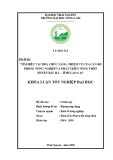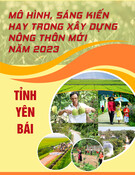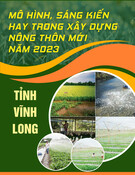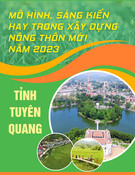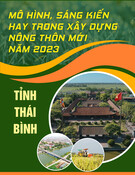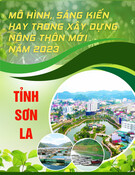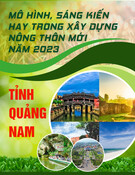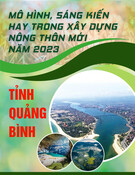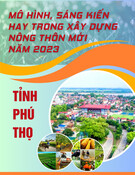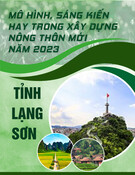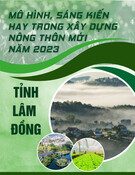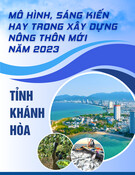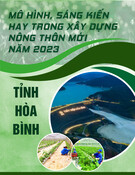
Int.J.Curr.Microbiol.App.Sci (2020) 9(11): 430-434
430
Original Research Article https://doi.org/10.20546/ijcmas.2020.911.052
Constraints Faced by Block Level ATMA Functionaries in Providing
Pluralistic Extension Services in the Cooch Behar District of West Bengal
Subhrajyoti Panda* and P. K. Pal
Department of Agricultural Extension, Uttar Banga Krishi Viswavidyalaya,
Pundibari, Cooch Behar, West Bengal, India
*Corresponding author
A B S T R A C T
Introduction
Pluralistic extension defines as the partnership
of different public, private, NGOs, Farmers
group to meet different approaches like
extension services, funding streams, and
agricultural information for providing service
to the farmers (Sajesh, et al., 2018, Rivera
and Qamar, 2003). Agricultural Technology
Management Agency is the public extension
system institution which disseminates
information to the farmers by converging with
other departments and satisfies the pluralistic
extension service definition. The ATMA is
the autonomous institution which provides
extension service at the district level. It
mainly works at different levels. The district
level officials are Project Director and two
Deputy Project Directors working as
extension functionaries. The Project Director
gives report to the district magistrate who is
the chairman of ATMA. The Farm
Information & Advisory Centre (FIAC)
consisting of Block Technology Team (BTT)
comprising officers of agriculture and other
allied departments within the block. Block
Technology Manager (BTM) is provided in
each Block to co-ordinate the ATMA related
International Journal of Current Microbiology and Applied Sciences
ISSN: 2319-7706 Volume 9 Number 11 (2020)
Journal homepage: http://www.ijcmas.com
Agricultural technology management agency (ATMA) is the autonomous
institution situated at the district level to provide service to the farmers. The
ATMA converge with other department of public, private, NGOs and
farmers to provide pluralistic type of service. The present study explores
the different constraints faced by the block level ATMA functionaries in
providing pluralistic extension service. The study was conducted in three
blocks of Cooch Behar district. The study revealed that the respondents
faced more technological constraints in the study for providing service.
K e y w o r d s
Constraint,
Pluralistic
extension,
Agriculture, Cooch
Behar, ATMA
Accepted:
07 October 2020
Available Online:
10 November 2020
Article Info

Int.J.Curr.Microbiol.App.Sci (2020) 9(11): 430-434
431
activities of the BTT and Block Farmers
Advisory Committee (BFAC).Under each
BTM three to four Assistant technology
managers are working. The block level
functionaries are the agents who directly
contact with the farmers. They are mainly
faced different constraints in providing
service. The ATMA extension functionaries
of Assam were facing infrastructural
problems, lack of adequate training on new
technologies, lack of knowledge on efficient
and appropriate methodologies in extension
activities, lack of coordination among the
staff of ATMA and unavailability of
agricultural inputs at affordable price to
farmers (Das and Borua, 2017).
Materials and Methods
The study was randomly conducted in three
blocks of ATMA. 23 official respondents
were selected to find out the constraints faced
by them. The constraints were taken for the
research purpose were administrative,
management, technological, Infrastructure
and policy, Financial and political constraints.
Constraints were measured as perceived by
the officials in the organization. Different
constraint situations were exposed with a 3-
point scale for response as: extreme (3),
moderate (2) and low (1) respectively. The
mean score of the constraints was considered
as the value of constraint and ranking was
done.
Results and Discussion
The present study explored the different
constraints faced by the block level ATMA
functionaries in providing pluralistic
extension services with different domains
Administrative, Management, Techno-logical,
Infrastructural and Policy, Financial and
Political.
The table 1 depicted the ranking of constraints
perceived by the ATMA officials for
providing service to the farmers.
Administrative constraint
To run an organisation efficiently the
administration should be structured. From the
table 1, it showed that majority of ATMA
officials given first rank to inadequate staffing
pattern to provide pluralistic extension service
to farmer having highest mean score 2.21
followed by other constraints like other line
departments are reluctant to support
practicing pluralistic services (2.04), Staff
vacancy within sanctioned posts (2.00), lack
of opportunities for updating knowledge
(1.91), too much report writing (1.85) and
post of supporting staff are less (1.65)
respectively. ATMA is formed at district level
to provide pluralistic service to the farmers.
But the staffing pattern is not good as it is not
recruiting any subject area specialist to
provide service. ATMA is formed to work
with other line departments but it is only
working under the state department of
agriculture. ATMA should be reformed at
district level with specific subject area
specialist to provide service to the farmer.
Management constraint
Management is the process of controlling or
dealing with the people for improvement of
the organisation. From the table 1 it was
revealed that majority of officials gives first
rank to lack of incentives for excellent work
having highest mean score 2.08 followed by
discrimination in reward, lack of
encouragement from superiors, difficulty in
practicing Bottom-up planning with farming
community and lack of cooperation from
subordinates, office staff and colleagues
having mean score 1.82,1.78,1.73 and 1.56
respectively.

Int.J.Curr.Microbiol.App.Sci (2020) 9(11): 430-434
432
Table.1 Constraint faced by the ATMA officials expressed in percentage (N=23)
Sl.
No.
Constraints
Somewh
at (1)
Moderate
(2)
Extreme
(3)
Mean
RANK
Administrative constraints
1.
Inadequate staffing pattern to
provide pluralistic services to the
farmers
0
78.26
21.74
2.21
I
2.
Staff vacancy within sanctioned
posts
30.43
39.13
30.43
2.00
III
3.
Other line departments are reluctant
to support practicing pluralistic
services
8.70
78.26
13.04
2.04
II
4.
Posts of supporting staff are less
52.17
30.43
17.39
1.65
VI
5.
Too much report writing
30.43
52.17
17.39
1.89
V
6.
Lack of opportunities for updating
knowledge
30.43
47.83
21.74
1.91
IV
Management Constraint
1.
Lack of incentives for excellent
work
26.09
39.13
34.78
2.08
I
2.
Lack of encouragement from
superiors
30.43
60.87
8.70
1.78
III
3.
Lack of cooperation from
subordinates, office staff and
colleagues
47.83
47.83
4.35
1.56
V
4.
Discrimination in rewards
30.43
56.52
13.04
1.82
II
5.
Difficulty in practicing Bottom-up
planning with farming community
30.43
65.22
4.35
1.73
IV
Technological Constraints
1.
Lack of location specific
technologies
26.09
56.52
17.39
1.91
III
2.
Lack of response from the farmers
to adopt technologies
17.39
56.52
26.09
2.08
I
3.
Lack of training facility to know
about new complex technology
17.39
65.22
17.39
2.00
II
Infrastructure and Policy Constraint
1.
Lack of infrastructural support
below district level
26.09
65.22
8.70
1.82
II
2.
Inadequate policy support for
convergence with other service
departments (Govt./NGO/Pvt.)
8.70
82.61
8.70
2.00
I
3.
Shortage of transport facility
30.43
60.87
8.70
1.78
III
Financial and Political constraint
1.
Pressure from the local politician to
fetch more benefits from KVK
schemes to their own jurisdiction
34.78
39.13
26.09
1.91
II
2.
Inadequacy of funds
17.39
65.22
17.39
2.00
I

Int.J.Curr.Microbiol.App.Sci (2020) 9(11): 430-434
433
Fig.1 Comparison between the constraints faced by ATMA officials
There was no incentive for the officials for
their excellent work which affects the work
performance of the officials. Their moral
value decreases as they are not getting any
recognition for their excellent work. The
government should give some incentive for
their excellent work for that the officials will
be highly encouraged and their work
performance will be improved.
Technological constraint
Technology is the main component to
increase the work efficiency and to reduce the
time of work. Table 1 reflects that lack of
response from the farmers to adopt
technologies was the major constraint having
mean score 2.08 followed by lack of training
facility to know about new complex
technology(2.00) and lack of location specific
technologies (1.91) respectively. As per the
officials there were a lot of farmers who are
hesitate to adopt new technology. The main
reason of lack of response from the farmers
was that the farmers were small and marginal
and believe in traditional farming. The
officials should aware the farmer about the
technology and they should form different
farmer group to adopt the technology. For
which the cost of technology will be less and
farmers can easily use the technology.
Infrastructure and policy constraint
From the table 1 it was shown that majority of
the officials gives first rank to inadequate
policy support for convergence with other
service departments (Govt./NGO/Pvt.) having
mean score 2.00 followed by lack of
infrastructural support below district level
(1.82) and Shortage of transport facility (1.78)
respectively. The officials were not getting
enough support from other departments to do
the work more effectively. There should be
specific policy for the convergence of the
departments to improve the efficiency of
worker as well as the farmers.
Financial and political constraint
Table 1 reflects that inadequacy of fund was
the major constraint than the pressure from
the local politician to fetch more benefits
from KVK schemes to their own jurisdiction.
The fund coming from the government was
not adequate to solve a large number of
farmers problem. The fund should be
increased by the government and there should
be a specific structure how to utilise the fund
in a specific scheme.
From the figure 1, it shows that technological
constraint was the major constraint followed

Int.J.Curr.Microbiol.App.Sci (2020) 9(11): 430-434
434
by administrative, financial and political,
infrastructure and policy and management
respectively. The officers should be taken
proper training on the new technology before
going to the farmer. The ATMA should
converge with the private company to transfer
the technology to the farmers.
Similar type of constraints faced by ATMA
officials also observed in the study of
Bortamuly and Khuhly, 2013, Das and Borua,
2017.
The study revealed that the block level
ATMA functionaries faced more constraints
on technological followed by administrative
and financial and political constraint. The lack
of response from the farmers to adopt any
new technology and lack of training facility
for the officials to know about the complex
technology were the major factors of
technological constraints faced by the ATMA
functionaries of Cooch Behar district, West
Bengal.
References
Sajesh, V.K., Padaria, R.N. and Sadamate,
V.V. 2018. Pluralism in Agricultural
Extension in India: Imperatives and
Implications, Economic Affairs, 63(4):
1017-1025.
Rivera, M. William and Qamar, Kalim M.
2003. A new extension vision for food
security Challenge to change,
Sustainable Development Department
Food and Agriculture Organization of
the United Nations, Rome.
Das, Priyanka., and Borua, Sajib. 2017.
Constraints Faced by Agricultural
Technology Management Agency
Extension Functionaries of Assam,
India and Their Suggestions to
Overcome, Asian Journal of
Agricultural Extension, Economics &
Sociology, 17(1): 1-7.
Bortamuly, D. and. Khuhly, B. L. 2013.
Constraints faced by Block Level
Extension Functionaries in facilitating
Commodity Interest Groups and Farm
Schools under ATMA in NE Indian
states, Journal of Academia and
Industrial Research, 2(5): 291-294
Kumar, K. Ankaiah., Eswarappa, G. and
Manjunatha, B. N. 2009. Constraints
faced by stakeholders in
implementation of agricultural
technology management agency,
Karnataka J. Agric. Sci., 24 (2): 255-
257.
How to cite this article:
Subhrajyoti Panda and Pal, P. K. 2020. Constraints Faced by Block Level ATMA Functionaries
in Providing Pluralistic Extension Services in the Cooch Behar District of West Bengal.
Int.J.Curr.Microbiol.App.Sci. 9(11): 430-434. doi: https://doi.org/10.20546/ijcmas.2020.911.052


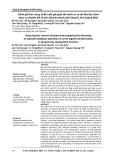
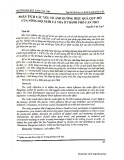
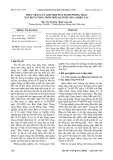

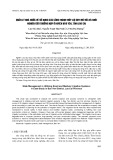
![Giáo trình Đánh giá nông thôn (Nghề Phát triển nông thôn Trung cấp) - Trường Cao đẳng Cộng đồng Đồng Tháp [Mới nhất]](https://cdn.tailieu.vn/images/document/thumbnail/2022/20221012/troinangxanh10/135x160/5011665566145.jpg)

![Giáo trình Kỹ năng giao tiếp Phát triển nông thôn Trung cấp - Trường Cao đẳng Cộng đồng Đồng Tháp [Chuẩn nhất]](https://cdn.tailieu.vn/images/document/thumbnail/2022/20221012/troinangxanh10/135x160/8251665566184.jpg)
